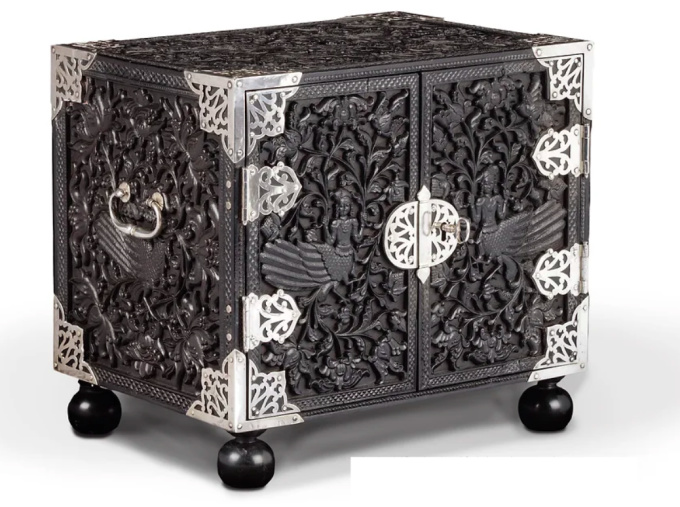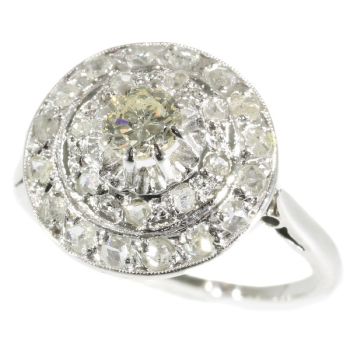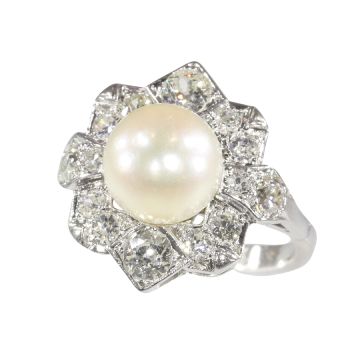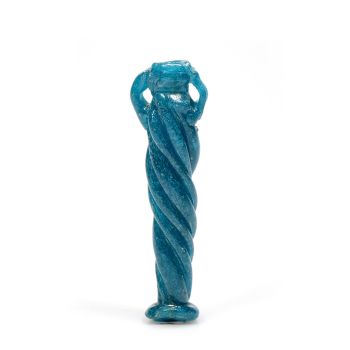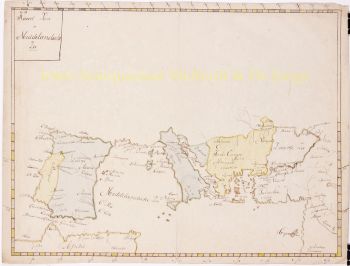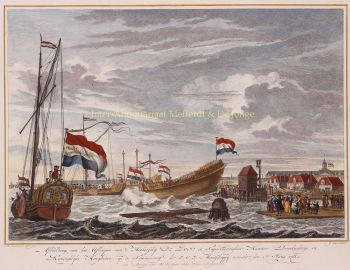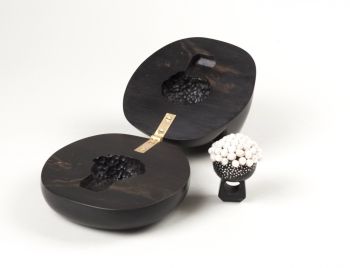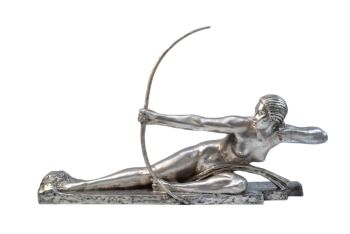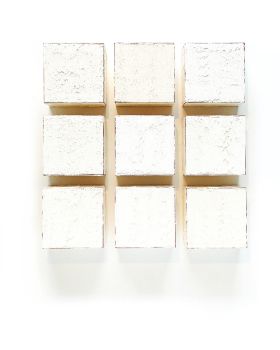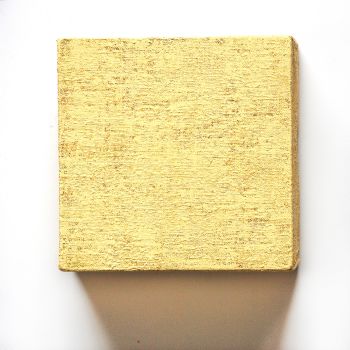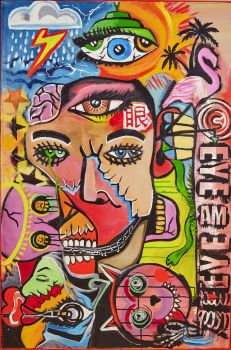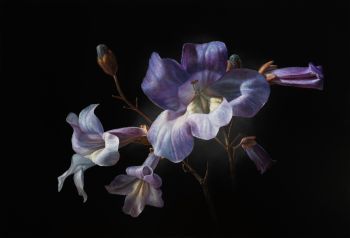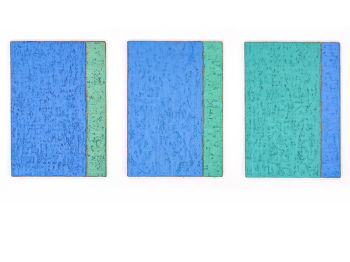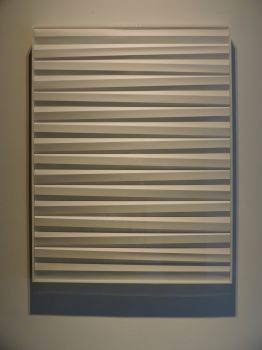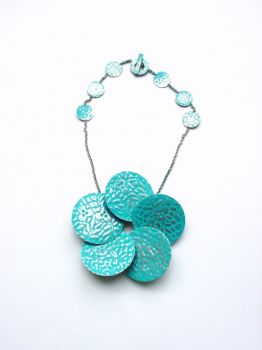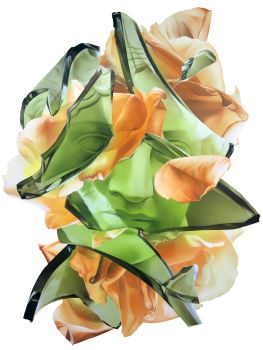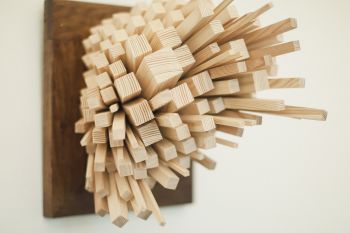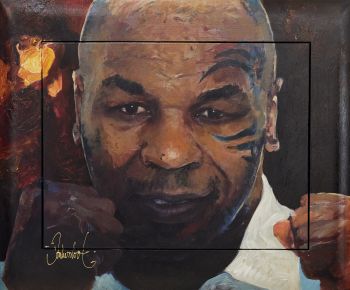A splendid Dutch-colonial Sinhalese ebony two-door cabinet with silver mounts 1600 - 1650
Artista Sconosciuto
EbanoLegnaArgento
29 ⨯ 32 ⨯ 23 cm
Prezzo su richiesta
Zebregs & Röell - Fine Art - Antiques
- A proposito di opere d'arte
Sri Lanka, Kandy, 2nd half 17th century, the mounts later
The cabinet with a central drawer with hidden compartment and the top drawer divided into four compartments. The surface carved all-over with scrolling plants issuing fleshy lotus palmettes, and in addition the exterior of the doors with a pair of kinnaris, the top with a seated deity encircled by birds, the back with a central lotus rosette flanked by quadrupeds and birds, and lastly the sides with a serapendiya, bordered by narrow diaper kundi rakkan bands.
The richly decorated panels carved in differing degrees of relief reveal the skill of the Sinhalese craftsmen and the scrolls issuing a richness of flowers and fruits are indicative of the island’s vegetal abundance. Their stylization is result of a cross-fertilization of Dutch and Sinhalese decorative elements that appear on furniture, textiles and silver that later appeared across the Asian VOC territories. The mythical kinnaris, serapendiya and the kundi rakkan banding are typical forms of Sinhalese ornamentation, but not often seen on furniture for the Dutch. (Mediaeval Sinhalese Art, Ananda K. Coomaraswamy, Pantheon Books 1908).
For cabinets of similar form and decoration see: Furniture from Indonesia, Sri Lanka and India during the Dutch period, Jan Veenendaal, 1985 pl.25, 29 and 58. Comparable Sinhalese furniture and objects with related carved decoration can be found in the Royal Collection Trust (21610, 21611), the Museum of Fine Arts Boston (1993.29) and the British Museum (1943.0712.4).
Provenance:
Private collection, United Kingdom Peter Lang, United Kingdom - A proposito di opere artista
Può succedere che un artista o un creatore sia sconosciuto.
Alcune opere non sono determinate da chi sono state realizzate o sono state realizzate da (un gruppo di) artigiani. Esempi sono statue dell'antichità, mobili, specchi o firme non chiare o leggibili ma anche alcune opere non sono affatto firmate.
Inoltre puoi trovare la seguente descrizione:
•"Attribuito a …." A loro avviso probabilmente opera dell'artista, almeno in parte
•“Studio di ….” o “Officina di” A loro avviso un'opera eseguita nello studio o nella bottega dell'artista, eventualmente sotto la sua supervisione
•“Cerchio di…” A loro avviso un'opera del periodo dell'artista che mostra la sua influenza, strettamente legata all'artista ma non necessariamente al suo allievo
•"Stile di..." o "Seguace di..." A loro avviso un'opera eseguita nello stile dell'artista ma non necessariamente da un allievo; può essere contemporaneo o quasi contemporaneo
•“Modalità di…” A loro avviso un'opera nello stile dell'artista ma di epoca successiva
•"Dopo …." A loro avviso una copia (di qualsiasi data) di un'opera dell'artista
•“Firmato…”, “Datato…” o “Iscritto” A loro avviso l'opera è stata firmata/datata/inscritta dall'artista. L'aggiunta di un punto interrogativo indica un elemento di dubbio
•"Con firma....", "Con data...", "Con iscrizione..." o “Riporta firma/data/iscrizione” a loro avviso la firma/data/iscrizione è stata aggiunta da qualcuno diverso dall'artista
Sei interessato ad acquistare questa opera d'arte?
Artwork details
Related artworks
- 1 - 4 / 12
Artista Desconocido
A rare Japanese export lacquer medical instrument box1650 - 1700
Precio a consultarZebregs & Röell - Fine Art - Antiques
Artista Desconocido
A Dutch colonial Indonesian betel box with gold mounts1750 - 1800
Precio a consultarZebregs & Röell - Fine Art - Antiques
Artista Desconocido
Japanese transition-style lacquer coffer 1640 - 1650
Precio a consultarZebregs & Röell - Fine Art - Antiques
Artista Desconocido
A superb Indonesian royal gem-set gold overlaid silver betel box19th century
Precio a consultarZebregs & Röell - Fine Art - Antiques
1 - 4 / 24Artista Desconocido
A large Japanese Imari porcelain 'VOC Groningen' dish1800 - 1925
Precio a consultarZebregs & Röell - Fine Art - Antiques
Artista Desconocido
Holandeses en miniatura18th century
Precio a consultarZebregs & Röell - Fine Art - Antiques
Artista Desconocido
UNA COLECCIÓN DE CUATRO CAJAS BÍBLICAS DE MARFIL DE SRI LANKAN18th century
Precio a consultarZebregs & Röell - Fine Art - Antiques
Artista Desconocido
UN NETSUKE DE MARFIL DE UN HOLANDÉS CON UNA COCKEREL18th century
Precio a consultarZebregs & Röell - Fine Art - Antiques
Artista Desconocido
UN PEQUEÑO NETSUKE DE MARFIL DE UN HOLANDÉS CON UN TAMBOR1750 - 1800
Precio a consultarZebregs & Röell - Fine Art - Antiques
 curada por
curada porDanny Bree
Cornelis Anthonisz Theunissen
MUY RARO PRIMER MAPA IMPRESO DE ÁMSTERDAM, UNA CIUDAD EN ASCENSO1544
€ 175.000Inter-Antiquariaat Mefferdt & De Jonge
 curada por
curada porDanny Bree
Artista Desconocido
Dos retratos de estudio de Mas Marco Kartodikromo1900 - 1950
Precio a consultarZebregs & Röell - Fine Art - Antiques
1 - 4 / 24Rene Rietmeyer
“NETHERLANDS BRABANT NOVEMBER 2000”2000
Precio a consultarEuropean Cultural Centre Collection
1 - 4 / 24Artista Desconocido
The Stamford Raffles Secretaires.1800 - 1813
Precio a consultarZebregs & Röell - Fine Art - Antiques
Paulus Franciscus Kromjong
Flores frente a Arearea Aka (alegría) por Gauguin '20th century
Precio a consultarZebregs & Röell - Fine Art - Antiques
Artista Desconocido
UN PEQUEÑO NETSUKE DE MARFIL DE UN HOLANDÉS CON UN TAMBOR1750 - 1800
Precio a consultarZebregs & Röell - Fine Art - Antiques
1 - 4 / 12

